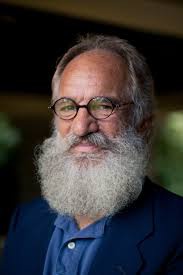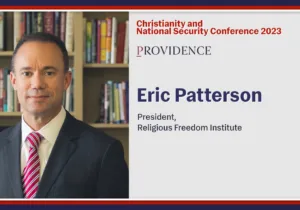In his review of John F. Shean’s Soldiering for God: Christianity and the Roman Army (Brill, 2010) and Despina Iosif’s Early Christian Attitudes to War, Violence and Military Service (Gorgias Press, 2013), Ronald Sider concedes “the ongoing persistent disagreement” about the early church’s view of war, soldering, and killing. This concession, one might conclude, suggests at the very least that there are two sides to the story. Sider’s review, however, attempts to argue that only one of those narratives—a “pacifist” consensus—is plausible. Doubtless, both Shean and Iosif would find his conclusion—that their findings are “based on speculation, not historical data”—as rather remarkable. As do I.
A bit of recent history here might be helpful. Up until roughly 1980, it was broadly assumed that (a) the early Christians were “pacifist,” based on an aversion to bloodshed; (b) by the late second century, some Christians were participating in the military, a number that grew in the third century; and (c) by the end of the fourth century, a “just war” ethic had developed, based on the thinking of Ambrose and Augustine, which mirrored a “Christian accommodation” to political changes—what some have called a “Constantinian fall” from its pristine purity (so Roland Bainton, John Cadoux, Jean-Michel Hornus, John Howard Yoder, among others). Historical research done by people such as John Helgeland, James Turner Johnson, and Louis J. Swift in the late 1970s and early 80s questioned the more or less uncritical acceptance of the pacifist interpretation of the early fathers.
A particular virtue of Helgeland’s Christians and the Military (1985), co-written with Robert K. Daly and J. Patout Burns, was that it asked explicitly how one’s theological bias and confessional allegiances influence the interpretation of early patristic data. In The Quest for Peace, Johnson was also critical of pacifist interpretation insofar as it “reads currently held normative values back into historical fact” (xvi), characterizing the resultant antithesis—a pacifist early church and a later church accepting of soldiering and war—as not only “misleading” but “dead wrong” (9). In his important 1983 volume, The Early Fathers on War and Military Service, Swift as well wished to acknowledge “two sides to the story” of early Christians and the military. This is as we might expect, he argued, given the diverse strands of teaching found in the New Testament itself. New Testament teaching, after all, must be squared with the fact that neither Jesus, nor John the Baptist, nor the apostles—in contexts of repentance—calls soldiers away from their vocation. Significantly, a Roman army officer is praised by Jesus as a paradigm of faith (Matthew 8), while another officer is the first baptized Gentile convert (Acts 10). Hence, per Swift, we err if we speak of a fourth-century “compromise” by the Church in light of the remarkable developments (away from ferocious persecution), which no one could possibly foresee. A shift, yes, but a “compromise,” no (29).[1] One of the strengths of Swift’s historical analysis is the attention devoted to textual evidence.
The work of Helgeland, Johnson, and Swift in the 1980s was marked by a pronounced sensitivity to the social-cultural and political changes that were afoot in the late second, third, and fourth centuries. K.W. Ruyter, summarizing aspects of the emergent new consensus in his 1982 essay “Pacifism and Military Service in the Early Church,”[2] notes that while the very early fathers tended to borrow the prophetic imagery of Isaiah and Micah as they envisioned future peace, this vision nevertheless belongs to a future age and not the present one. Consequently, with each successive generation of Christians beyond the apostolic period, the growing question was how to relate Christian faith to the present social order. (In this regard, one is reminded of Luther’s quip that if the lion and lamb are to lie together in the present life, the lamb will need constant replacing.) In the end, Ruyter too rejects the portrait of a “purely pacifist” early Church: “On the basis of the sources, the picture seems to be more complex and pluriform” (55).
Before the late second century, when we find evidence of Christians in the Roman army, what precisely were prevailing socio-cultural conditions that would have limited Christian enlistment? As the “new consensus” has shown, there was little need for recruits in the Roman Legions. No general conscription was in place. What’s more, until the mid-second century many Christians possessed no Roman citizenship, which was required for joining the army. And it is simple fact that Christians early on were generally viewed as a “potentially disloyal sect.” Hence, Christian participation in the military, until the mid-to-late second century, was for sociological reasons a non-issue.
Writing on the state of the question in 1989 (“A Decade of Research on Early Christian’s”),[3] David G. Hunter sought to add perspective to the emergence of a “new consensus.” Hunter observed that “the former ‘pacifist consensus’ has been definitively revised in the light of contemporary discussion” (93, italics added). Findings of the “new consensus” were identified as the following: (a) opponents of military service objected on the basis of a variety of factors, not merely bloodshed; (b) evidence from the late second century onward indicated divergence of opinion among Christians; and (c) even among some pre-Constantinian fathers we see evidence of concern for a “just” case in going to war.[4]
According to one patristic historian, a striking feature of early patristic writings is how infrequently the subject of Christians, war, and soldiering occurs. Such is significant, for if it were the source of controversy, we would expect heated exchanges, conciliar declarations and excommunications, which do not materialize. Elsewhere I have weighed the patristic evidence,[5] and with recent scholarship, have concluded that, yes, Helgeland, Johnson, Swift, Hunter, Ruyter, and others are correct. There is indeed a scholarly consensus (and an ecumenical one at that), but it is not the consensus that Sider wishes to salvage.
Finally, the ethical ramifications of contemporary accounts of the first three centuries such as Sider’s, which are intended to be prescriptive and not merely descriptive, should give us pause. Because pacifism, by virtue of its refusal to participate in politics, cannot treat either criminal justice or international affairs seriously qua politics, it misconstrues—and severely limits—not only the Church’s wider cultural mandate but also the manifold expressions of charity toward the oppressed that are affirmed by mainstream Christian thinking. One need only recall that Thomas Aquinas’ discussion of Christian participation in war in Question 40 of the Summa (II-II) is contextualized in his treatment of caritas. As Elizabeth Anscombe argued, a defect of ideological pacifism is that it teaches people to make no distinction between shedding innocent blood and shedding any blood (hereon see the Sixth Commandment).[6]
In this light, then, scholarly and theological integrity demand an accurate accounting of the complexity and diversity of pre-Constantinian Christian attitudes toward the military. It is surely worth noting that dissenting attitudes toward Christian enlistment in the Roman army during this period are individual and not collective or ecclesial. No controversy on the matter involving the entire Church or even between churches erupted. And we are justified in asking whether those individuals who did dissent were in fact representative of the Church at large.
Indeed, we should not be overly surprised to find ambivalence or disagreement among early Christians on such matters. In truth, diversity is more likely than uniformity to approximate the full range of Christian thinking—then and now—about soldiering and war.
—
J. Daryl Charles teaches in the Chattanooga Fellows Program and is an Affiliated Scholar of the John Jay Institute. He is author, co-author or editor of 14 books, including (with Mark David Hall) America’s Wars: A Just War Perspective (University of Notre Dame Press, forthcoming), (with David D. Corey) The Just War Tradition: An Introduction (ISI Books, 2012), (with Timothy J. Demy) War, Peace, and Christianity (Crossway, 2010), and Between Pacifism and Jihad (IVP, 2005)
Photo Credit: Vision of Cornelius the Centurion (1664) by Gerbrand van den Eeckhout (1621- 1674) via Wikimedia Commons







 Sponsor a student for Christianity & National Security 2024
Sponsor a student for Christianity & National Security 2024